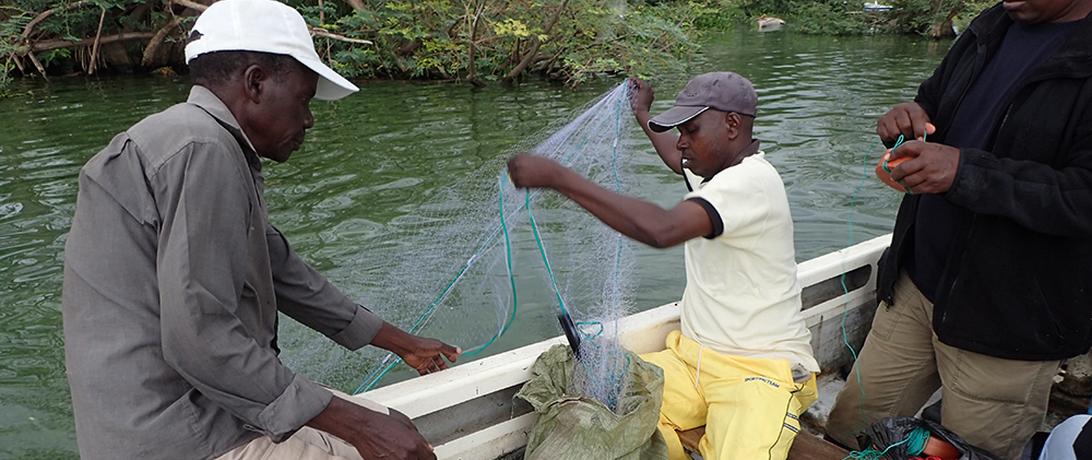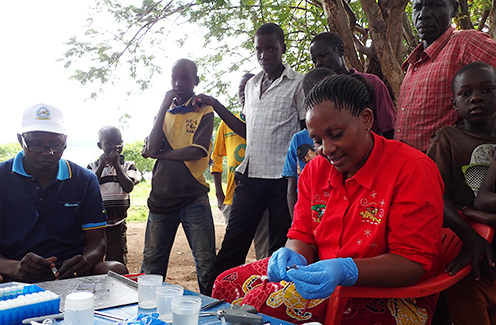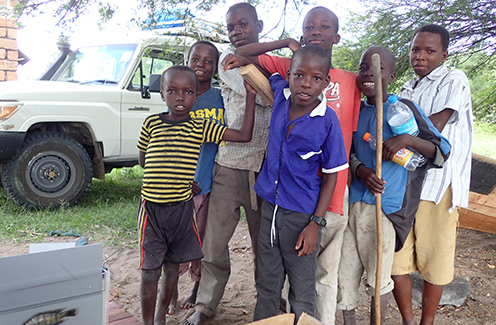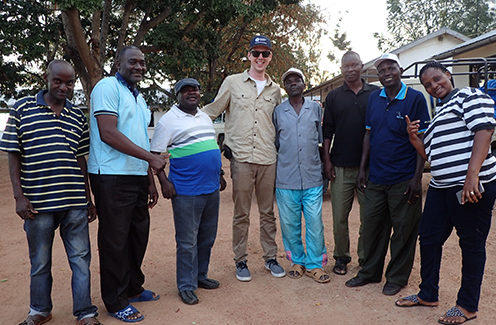
Researchers in Tanzania explore the importance of biodiversity in Lake Victoria’s colorful cichlid populations.
In this multi-part blog series (see here for Part 1 and Part 2), our team in the field explores the mounting conflict over fisheries in Lake Victoria, and the critical role of biodiversity and conservation in promoting long-term food and economic security in the region.
By Michael O’Neill of the New England Aquarium, with Hillary Mrosso and Mary Kishe of the Tanzania Fisheries Research Institute (TAFIRI)
Lake Victoria, Tanzania - Wishing our best to the fellow scientists in the field and everyone following our progress online! Hillary, Mary, and I are here to share some of our experiences and lessons from an historic survey of haplochromines in Lake Victoria. Led by TAFIRI, our survey will cover the Tanzanian coastline of Lake Victoria, which comprises the entire southern half of the lake. Our coastal gillnet survey consists of nearly a dozen sampling sites designed to create a comprehensive understanding of the species diversity and distribution along this portion of the coast.
A critical component of our coastal survey focuses on the abundance and distribution of haplochromine cichlids. While historically these cichlids have evolved to occupy nearly every possible niche of the Lake Victorian ecosystem, the rocky shores of Tanzania are considered hot spots known to harbor over 100 species that appear to have been spared from previous ecological turmoil in the lake. It is our hope that even more haplochromine species remain yet to be discovered. This research will provide a baseline to help us answer the question: how might future aquaculture developments impact the lake’s fishes?
I am lucky enough to work alongside Hillary Mrosso and Dr. Mary Kishe, both of whom have tremendous cichlid experience, and to be in remote correspondence with Dr. Les Kaufman and Dr. Ole Seehausen to ensure species identification is conducted accurately and in real-time. As each net is hauled, we work to sort and process every fish collected while cataloging samples for further study.

After photographs are taken, each specimen is processed for measurements, DNA, and stable isotope sampling.
The task of carrying out proper survey methods and sampling techniques can be made quite difficult by the conditions in the field. Our team relies heavily on experienced drivers and excellent navigation to travel from site to site over rural roadways and rocky conditions. On top of that, maintaining the proper techniques to keep organized and prevent sample contamination presents many challenges for our team as we battle weather, insects, and time constraints to keep on schedule.
We have had excellent luck at one or two sites, including hauls in which we have found over a dozen species. Hopefully, further documentation will be able to confirm the discovery of new halpochromine species! Unfortunately, it has been far more common to come across sites with startlingly low fish abundance and diversity. Not only has the ecology of Lake Victoria been subjected to substantial invasion by foreign species of plant and animal, but fishing practices and pressures have taken their toll in many areas as well.
At one site in particular, our team came across numerous signs of illegal fishing practices. To our dismay, hints of illegal fishing were in areas that should be protected sites known for their rich biodiversity. In some locations, daily fish catch is now so low, that local fishers are no longer hauling their nets, but simply setting them perpetually, checking them every few days and removing any catch, then returning them to the set position. This was a clear sign of an area being drastically over-fished. On top of this, Dr. Kishe noted that while our team was sampling the area over two days, many of the local men in the village were standing idle, watching our work. She noted that while members of the village were curious to see what we were up to, many of them were also likely fishing the area illegally and, due to our presence, they were forced to stay ashore.

A crowd of interested on-lookers.
While seeing this evidence was disheartening, I also see signs of hope for the future. The TAFIRI team seems to be quite popular with the local community at each field site we visit. It is enriching to see the fascination on the faces of so many, particularly young people, wanting to know more about what we are doing and why.

Future fish biologists observe the sampling process and learn how to photograph specimens.
The TAFIRI team itself is a testament to the initiative that many in the lake zone are taking to improve stewardship of the lake. Nearly all the researchers here grew up in the communities along the lake shore and are now using connections with local communities to improve the survey and increase participation in the conservation of this vital resource. As the survey reaches its midway point, I am sad to leave the new colleagues and friends I have made here in Tanzania, but I am also comforted that the experienced leadership of Dr. Mary Kishe and Hillary Mrosso will continue to deliver invaluable data on the status of Lake Victoria. It is only through rigorous field work like this that we can hope to find conservation solutions for the lake and its surrounding communities.

Part of our field survey team pause for a photo.
Article Details
Published
Topic
Program
Content Type
Opinion & Insights